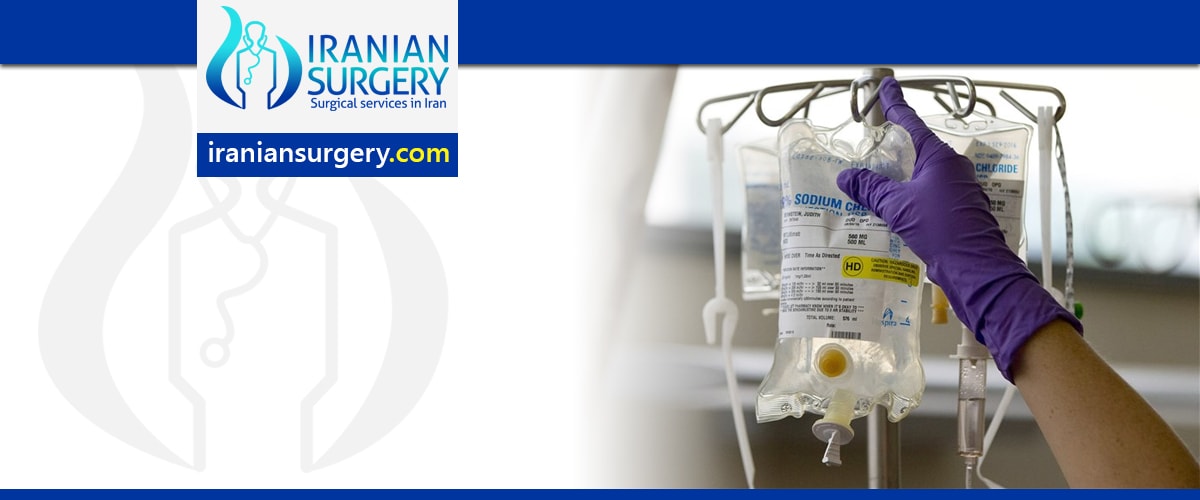Types of Chemotherapy
Types of chemotherapy include:
- Alkylating Agents
Alkylating agents are most active in the resting phase of the cell. These types of drugs are cell-cycle non-specific. There are several types of alkylating agents used in chemotherapy treatments:
. Mustard gas derivatives: Mechlorethamine, Cyclophosphamide, Chlorambucil, Melphalan, and Ifosfamide.
. Ethylenimines: Thiotepa and Hexamethylmelamine.
. Alkylsulfonates: Busulfan.
. Hydrazines and Triazines: Altretamine, Procarbazine, Dacarbazine and Temozolomide.
. Nitrosureas: Carmustine, Lomustine and Streptozocin. Nitrosureas are unique because, unlike most types of chemo treatments, they can cross the blood-brain barrier. They can be useful in treating brain tumors.
Read more about: cervical cancer risk factors
Read more about: Types of chemotherapy
Read more about: Chemo side effects
Read more about : Colorectal cancer surgery
Read more about: Cancer treatment
. Metal salts: Carboplatin, Cisplatin, and Oxaliplatin.
- Plant Alkaloids
Plant alkaloids are chemotherapy treatments derived made from certain types of plants. The vinca alkaloids are made from the periwinkle plant (catharanthus rosea). The taxanes are made from the bark of the Pacific Yew tree (taxus). The vinca alkaloids and taxanes are also known as antimicrotubule agents. The podophyllotoxins are derived from the May apple plant. Camptothecan analogs are derived from the Asian "Happy Tree" (Camptotheca acuminata). Podophyllotoxins and camptothecan analogs are also known as topoisomerase inhibitors, which are used in certain types of chemotherapy. The plant alkaloids are cell-cycle specific. This means they attack the cells during various phases of division.
. Vinca alkaloids: Vincristine, Vinblastine and Vinorelbine.
. Taxanes: Paclitaxel and Docetaxel.
. Podophyllotoxins: Etoposide and Tenisopide.
. Camptothecan analogs: Irinotecan and Topotecan.
- Antitumor Antibiotics
Antitumor antibiotics are chemo treatments made from natural products produced by species of the soil fungus Streptomyces. These drugs act during multiple phases of the cell cycle and are considered cell-cycle specific. There are several types of antitumor antibiotics:
. Anthracyclines: Doxorubicin, Daunorubicin, Epirubicin, Mitoxantrone, and Idarubicin.
. Chromomycins: Dactinomycin and Plicamycin.
. Miscellaneous: Mitomycin and Bleomycin.
- Antimetabolites
Antimetabolites are types of chemotherapy treatments that are very similar to normal substances within the cell. When the cells incorporate these substances into the cellular metabolism, they are unable to divide. Antimetabolites are cell-cycle specific. They attack cells at very specific phases in the cycle. Antimetabolites are classified according to the substances with which they interfere.
. Folic acid antagonist: Methotrexate.
. Pyrimidine antagonist: 5-Fluorouracil, Foxuridine, Cytarabine, Capecitabine, and Gemcitabine.
. Purine antagonist: 6-Mercaptopurine and 6-Thioguanine.
. Adenosine deaminase inhibitor: Cladribine, Fludarabine, Nelarabine and Pentostatin.
- Topoisomerase Inhibitors
Toposiomerase inhibitors are types of chemotherapy drugs that interfere with the action of topoisomerase enzymes (topoisomerase I and II). During the process of chemo treatments, topoisomerase enzymes control the manipulation of the structure of DNA necessary for replication.
. Topoisomerase I inhibitors: Ironotecan, topotecan
. Topoisomerase II inhibitors: Amsacrine, etoposide, etoposide phosphate, teniposide.
- Miscellaneous Antineoplastics
Several useful types of chemotherapy drugs are unique:
. Ribonucleotide reductase inhibitor: Hydroxyurea.
. Adrenocortical steroid inhibitor: Mitotane
. Enzymes: Asparaginase and Pegaspargase.
. Antimicrotubule agent: Estramustine
. Retinoids: Bexarotene, Isotretinoin, Tretinoin (ATRA)
The doctor will recommend a suitable option for the individual. They may recommend combining chemotherapy with other options, such as radiation therapy or surgery.
Read more about : What is colorectal cancer?
Read more about : Signs a fissure is healing
About Iranian Surgery
Iranian surgery is an online medical tourism platform where you can find the best Surgeons to treat your cancer in Iran. The price of treating a cancer in Iran can vary according to each individual’s case and will be determined by the type of cancer you have and an in-person assessment with the doctor. So if you are looking for the cost of cancer treatment in Iran, you can contact us and get free consultation from Iranian surgery.

Read more about : Foods that cure fissures
Read more about : Anal abscess treatment
Read more about: Bladder Cancer Staging
Read more about: Rectal Cancer Staging
Read more about: Ovarian Cancer Risk Factors
Read more about: Ovarian cancer symptoms
Read more about: Breast Cancer Treatment by Stage


